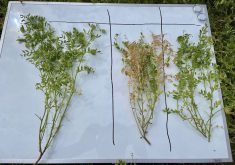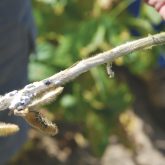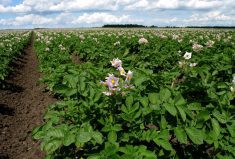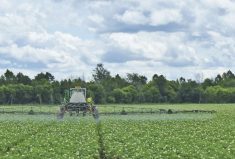With spring in the air, now is the time for a quick reminder of some of the diseases that are likely to challenge corn growers in 2016. Northern leaf blight is turning into one of those diseases that growers are simply going to have to deal with on an annual basis.
You’re already doing this with soybean cyst nematodes (SCN) and with fusarium head blight in wheat. Now it is corn’s turn.
The 2015 growing season saw northern leaf blight continue its spread across Ontario. According to Albert Tenuta, field crops pathologist with the Ontario Ministry of Agriculture, Food and Rural Affairs, it was possible to find the disease in almost every field across the province.
Read Also

Sensing the soil: Root cell research finds ‘stress hormone’
Research into how root cells react to soil stressors could help plants better adapt to changes in their climate.
“That ranges from low levels to quite severe and significant levels,” says Tenuta. “The largest concentration continues to be in southwest and central Ontario, so basically Toronto westward would be the highest incidence.”
To put that in perspective, there were 181 fields surveyed across the province in 2015. Of these, 176 were found to have detectable levels of northern leaf blight. In southern, western and central Ontario, every field had some level of infection. In eastern Ontario, only five didn’t.
There are other foliar diseases that growers should also be aware of, such as common rust and grey leaf spot. Yet research trials on northern leaf blight by Dave Hooker at the University of Guelph’s Ridgetown Campus have shown yield losses of 20 to 30 bu./ac.
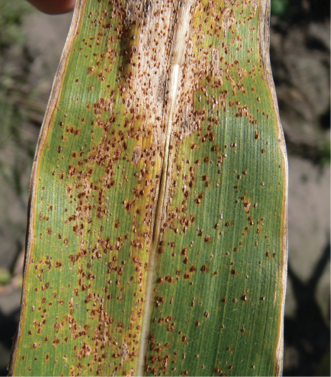
“Being able to identify the disease is important, because with diseases such as northern leaf blight, as well as rust and grey leaf spot, those 20- to 30-bushel losses can be common under moderate pressure and good environmental conditions,” says Tenuta. “An infection of eyespot that might look bad would only lose four to six bushels, but that would hardly pay for the fungicide application. That’s where identification of the diseases is important in terms of best utilizing your management options in-season.”
Genetics losing strength
The other reason northern leaf blight is such a concern is that its races are capable of overcoming the genetic resistance in current hybrids.
“One of the reasons why it’s increasing is that the genes that were most effective, particularly the Ht1 (Helminthosporium turcicum) gene that was always very effective, is not as effective as it used to be,” explains Tenuta. “What we’re seeing now predominantly is that more races that are developing and are able to bypass that Ht1 gene.”
In the meantime, Tenuta recommends growers arm themselves with as many tools as they can find. Since this is a residue-borne infection, growers can help themselves by reducing corn-on-corn planting and by managing their residues more effectively.
What can also help is more in-depth genetic research, and Tenuta points to one endeavour he believes will be of tremendous help in the development of new hybrids. It’s a project initiated by the Grain Farmers of Ontario with funding from the federal Growing Forward 2 program, specifically to research northern leaf blight.
In this research, OMAFRA and Dr. Lana Reid at Agriculture and Agri-Food Canada (AAFC) in Ottawa are looking at the incidence of northern leaf blight, and also at differential races. In the past two years, they’ve collected nearly 400 isolates from across Ontario and looked at the five main genes that can impart resistance to the disease. Ultimately, notes Tenuta, there are races of the disease that can overcome not only the Ht1 gene but the other four Ht genes as well, which is one of the reasons more growers are seeing more northern leaf blight.
“Some of the other genes that are out there are fairly effective, and they’re being incorporated into new hybrids, but that does take time,” Tenuta says. “That’s where other integrated management strategies are important to help minimize the risk.”
Don’t forget other threats
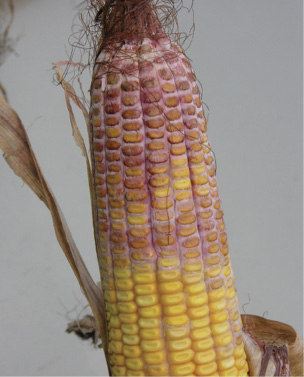
Also on Tenuta’s list of diseases to watch are common rust and grey leaf spot. Both can have a significant yield impact just like northern leaf blight, which means they need to be monitored every year. On another note, gibberella (ear rot and stalk rot) and ear moulds are always a concern, especially when the environmental conditions are conducive to gibberella’s development. On the plus side, gibberella can be controlled reasonably well through hybrid selection (with good stalk standability and resistance to lodging) and by managing residues and applying fungicides.
“More and more growers are doing these things to manage gibberella, and we always have some hot spots, where we have a few areas where because of the environmental conditions at pollination and silking that allows for some degree of infection,” he says. “Luckily, during the past few growing seasons, the numbers have been pretty low for us, but every year is different.”




